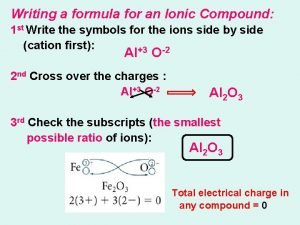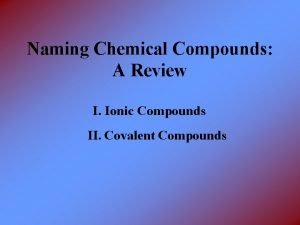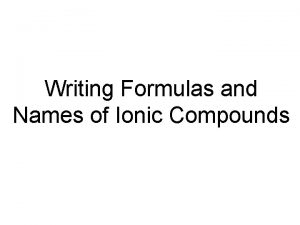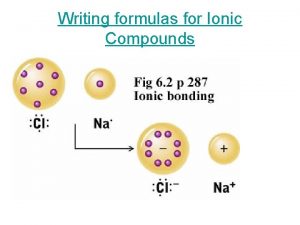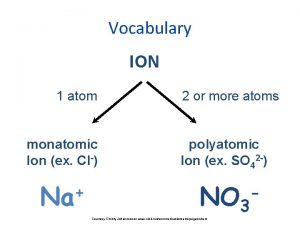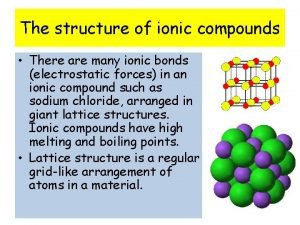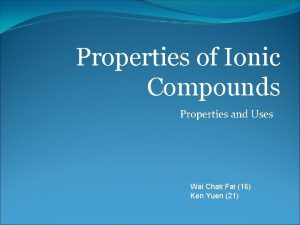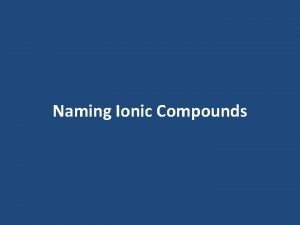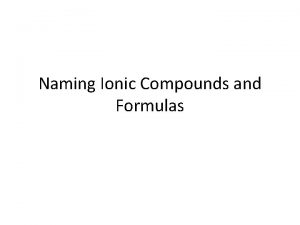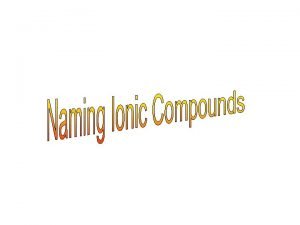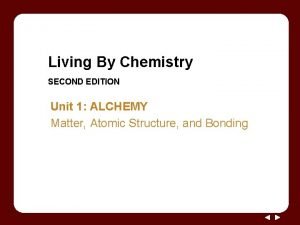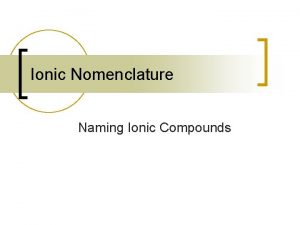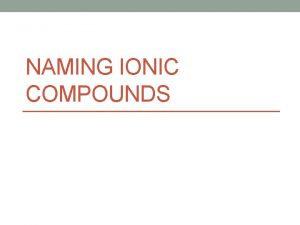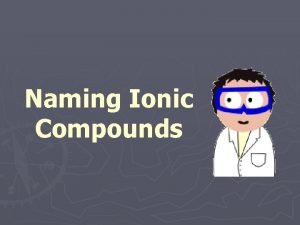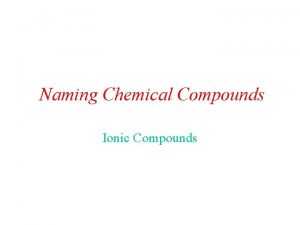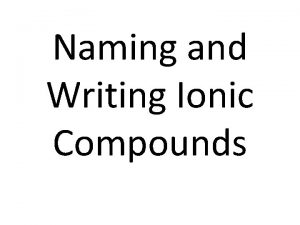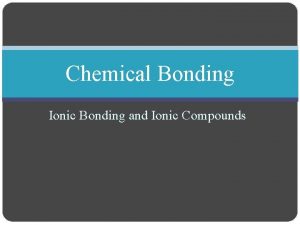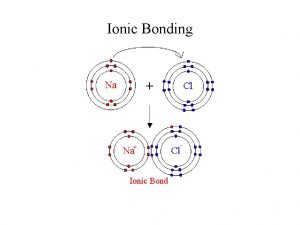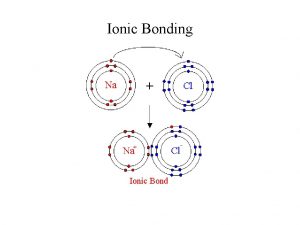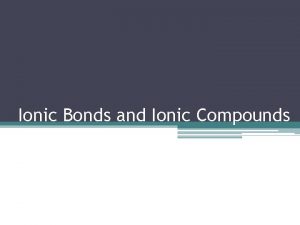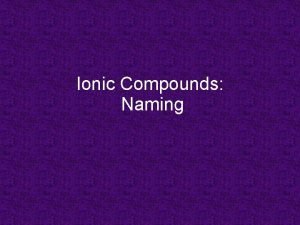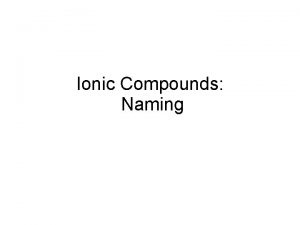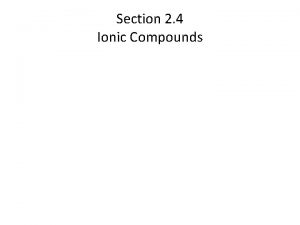FORMULA WRITING Say what Formula Writing Ionic Compounds



















- Slides: 19

FORMULA WRITING Say what? ?

Formula Writing Ionic Compounds One metal + one non-metal

Let’s Review Fill in the charges

More Review How are ions formed? � Positive ions – Aka: � Negative ions – Aka:

Lets Write Some Formulas… Positive ions are ALWAYS written first. � If more than one ion can exist, use parentheses and the charge in roman numeral form Ie: Cu+2 is named copper (II) These are called multivalent ions. Negative ions are ALWAYS written second. So… � Can two positive ions ever be put together? � Can two negative ions ever be put together?

How do you know what numbers to use? Criss-Cross Method � Identify the charge of each ion � “criss-cross” the charges ignore the + and – Numbers become subscripts for other element Let’s do a few examples… pick any cation and anion:

Naming Compounds Cation stays the same Anion ending changes to –ide � Often this simply involves changing the –ine ending Chlorine chloride Fluorine fluoride Bromine bromide � However, there are some you need to remember: Examples: Phosphorus phosphide Sulfur sulfide Oxygen oxide

Let’s do some more practice… Charges Name Ca and Cl Ba and O Cu and I Criss Cross

Formula Writing Polyatomic Ion Compounds

Polyatomic Ions Remember: � Cation (positive ion) is written first � Anion (negative ion) is written second New: � Put parentheses around the polyatomic ion ALWAYS

Naming the Compounds with Polyatomics You need to recognize the Polyatomic Ions If monoatomic ion: cation and anion is the same If polyatomic ion: use names provided

Some Polyatomic Practice Write the formula the following: Formula Name � Ba +2 C 2 H 3 O 2 -1 _____________________ � Al +3 PO 4 -3 _____________________ � K +1 SO 4 -2 _____________________ � Ca +2 NO 3 -1 _____________________

Formula Writing Covalent Molecules 2 non-metals together

Writing Formulas Remember, bonds require 2 electrons � Covalent is the sharing of electrons

Naming Covalent Compounds The less electronegative element is written first. � Remember the trend (increasing up and to the right) � Use a number indicating prefix only if more than one atom is present Ie N 2 is dinitrogen A prefix is always added to the name of the second element � Will change ending of name to –ide (just like ionic bonds)

Naming Covalent Compounds - Rules Leave the "a" off the end of the prefixes that end in "a" and the “o” off of mono-if they are placed in front of an element that begins with a vowel. Number Indicating Prefixes: � mon(o) -1 � hex(a) - 6 � di -2 � hept(a) - 7 � tri -3 � oct(a)- 8 � tetr(a) - 4 � non(a) -9 � pent(a) -5 � dec(a) -10

Try Some Practice N 2 S 4 NI 3 CCl 4 P 2 O 5

Try Some Practice ~ ANSWERS N 2 S 4 Dinitrogen tetrasulfide NI 3 Nitrogen triiodide CCl 4 Carbon tetrachloride P 2 O 5 Diphosphorus pentoxide

Common Names H 2 O - water NH 3 - ammonia CH 4 - methane C 2 H 6 - ethane C 3 H 8 - propane
 Venn diagram of ionic, covalent and metallic bonds
Venn diagram of ionic, covalent and metallic bonds Writing the formula for ionic compounds
Writing the formula for ionic compounds How to write the chemical formula for ionic compounds
How to write the chemical formula for ionic compounds Review naming chemical compounds
Review naming chemical compounds Charges of compounds
Charges of compounds Writing formulas from names
Writing formulas from names Templates for introducing quotations
Templates for introducing quotations Writing formulas crisscross method
Writing formulas crisscross method Ternary ionic compounds
Ternary ionic compounds Cl
Cl Why ionic solids are brittle
Why ionic solids are brittle Solubility and molarity relationship
Solubility and molarity relationship Ionic compounds
Ionic compounds Cl-1 ion name
Cl-1 ion name How to name ionic compounds
How to name ionic compounds Ternary ionic compounds
Ternary ionic compounds Naming binary compounds ionic
Naming binary compounds ionic Lesson 20 getting connected ionic compounds
Lesson 20 getting connected ionic compounds Compound name
Compound name Ionic compounds
Ionic compounds

